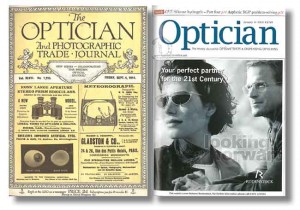 On Thursday April 2, 1891, opticians in the UK were presented with a journal that would help them improve their practice, a journal that has been published in an almost unbroken sequence for 125 years.
On Thursday April 2, 1891, opticians in the UK were presented with a journal that would help them improve their practice, a journal that has been published in an almost unbroken sequence for 125 years.
After researching the optical sector and talking to optician Thomas Dallmeyer in an effort to answer a question sent in by a reader, London newspaper reporter Charles Hyatt-Woolf decided that opticians, along with photographic, mathematical and instrument professionals, needed a weekly recorder of the industry.
Despite some quarters of the optical profession being less than enthusiastic, predicting the title would last no longer than six months, Optician has continued to provide optical professionals with independent news, features and education.
Register now to continue reading
Thank you for visiting Optician Online. Register now to access up to 10 news and opinion articles a month.
Register
Already have an account? Sign in here

